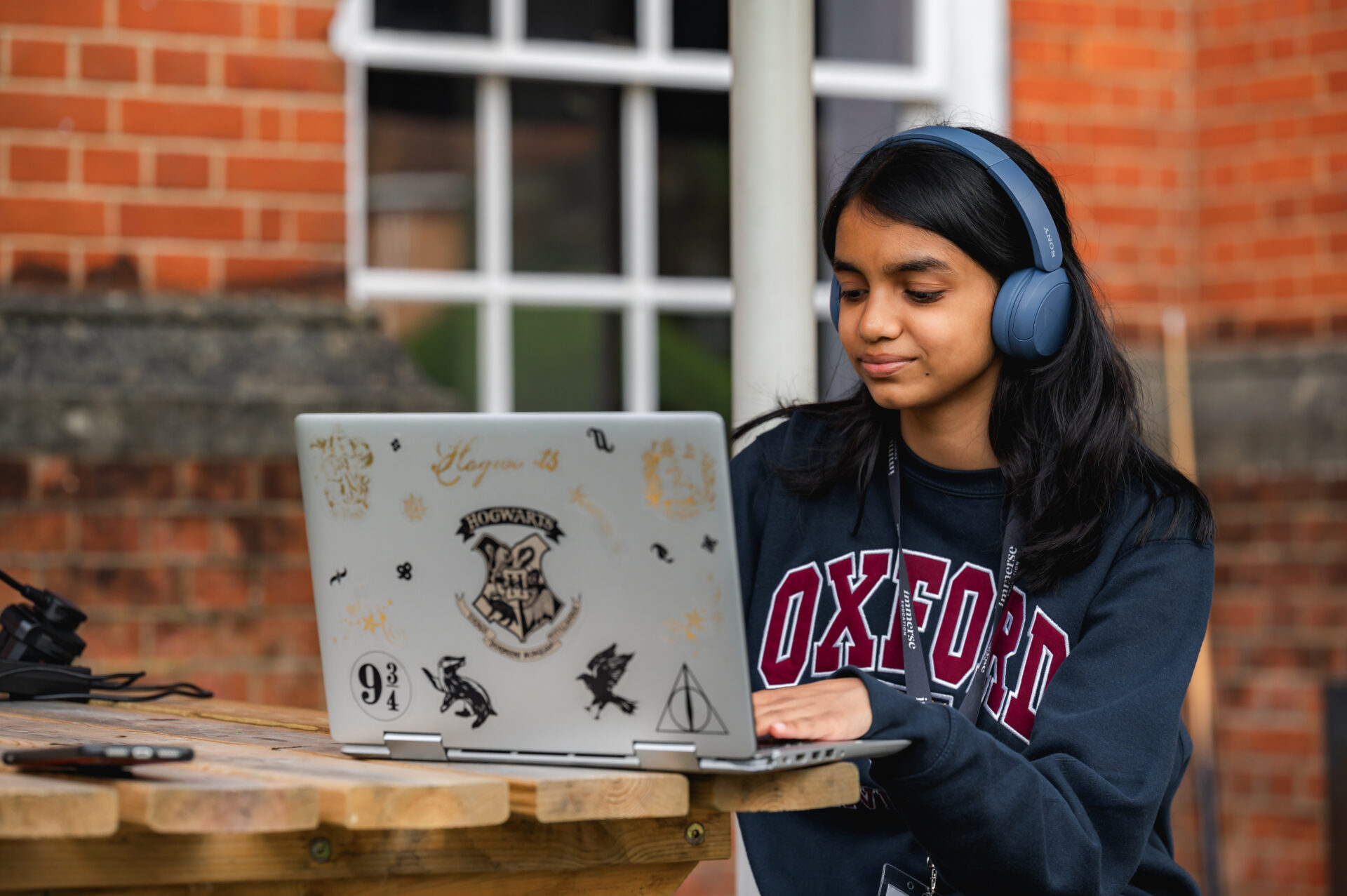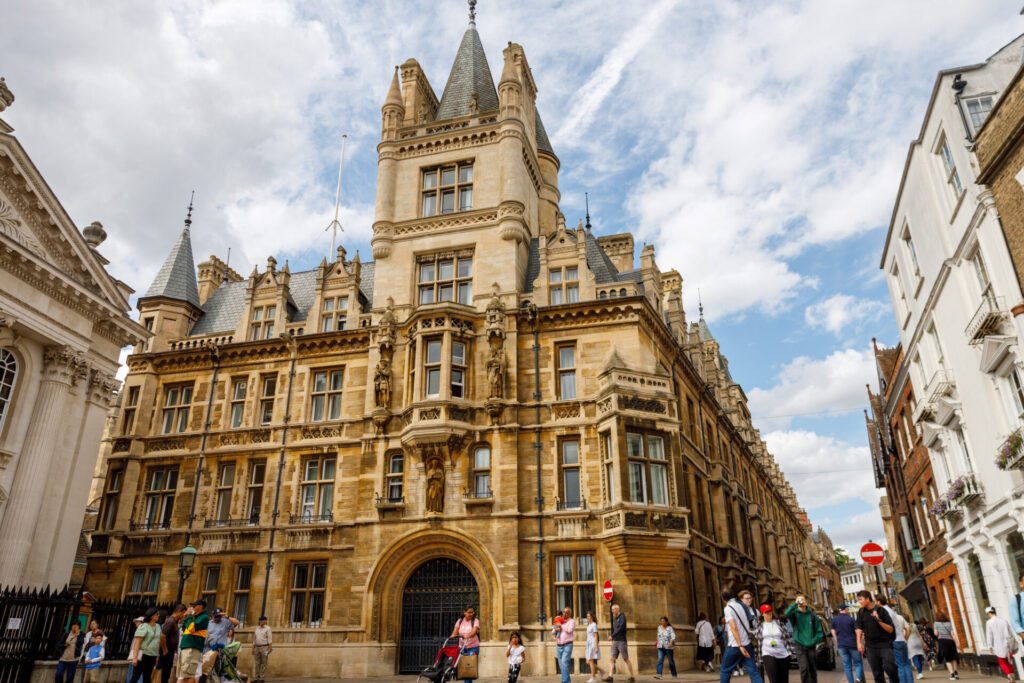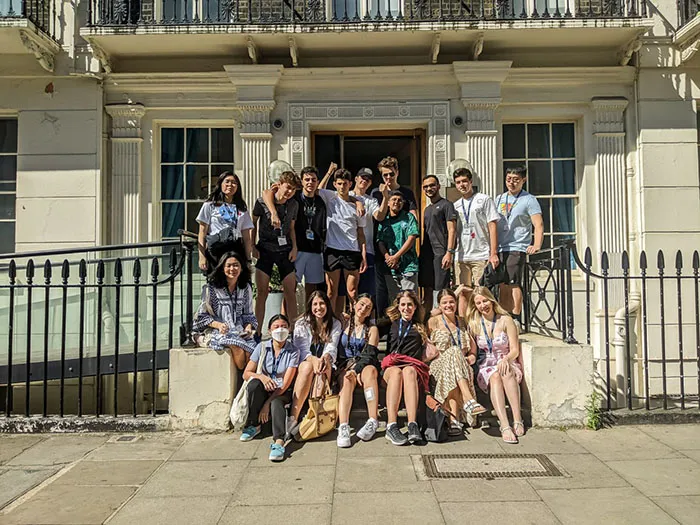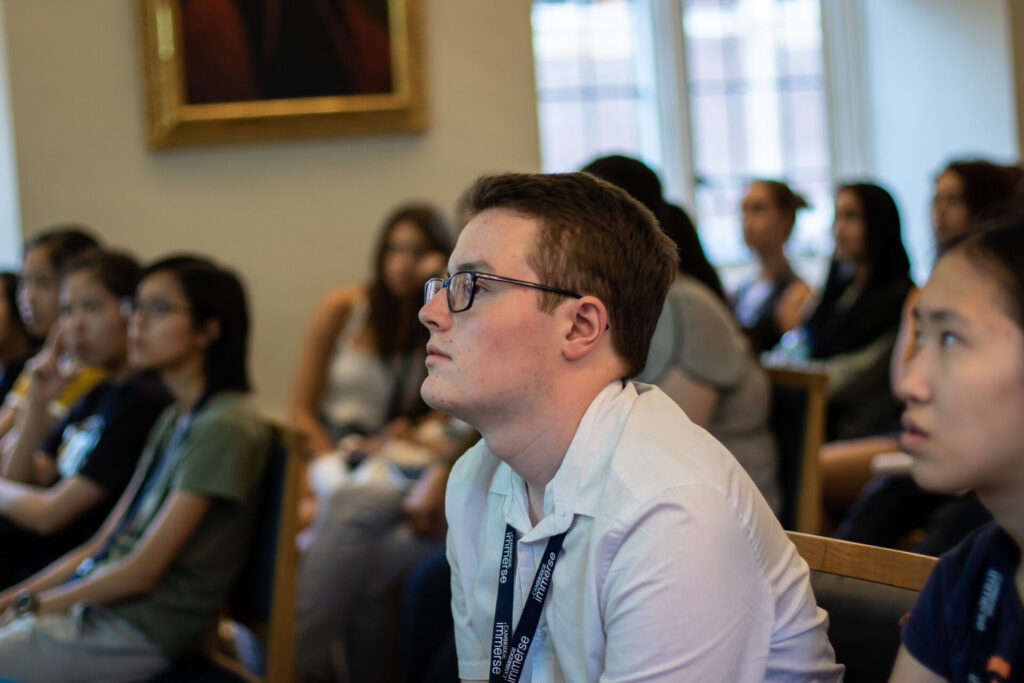Oxford University feels like a place where tradition blends seamlessly with modern learning, shaping student life in Oxford in ways that feel both familiar and new. Its historic colleges and lively study spots create a setting filled with inspiration.
This blend is why ambitious learners from around the world continue to choose Oxford as a place that encourages confidence, curiosity, and growth.
Its libraries, cafés, and discussion-led culture give you room to explore ideas and develop your own academic independence.
If you want to experience this before university, our Oxford Summer School offers a hands-on way to step into the city’s academic atmosphere.
Here’s what a day-to-day looks like for an Oxford student in 2026.
Why Oxford Captivates Students in 2026
Oxford still captivates students in 2026 because the city brings history and modern learning together in a way that feels alive. Its colleges, libraries, and peaceful study spaces create surroundings that naturally support curiosity and ambition.
The University of Oxford sits at the very top of global higher education. It ranks number one in the Times Higher Education World University Rankings 2026. That global recognition shapes the energy you feel as you move through the city.
Oxford-educated Malala Yousafzai, Stephen Hawking, Oscar Wilde, and Indira Gandhi, and their achievements shape the city’s sense of possibility.
The university is known for its tutorial system, where discussion drives learning rather than lectures alone. This approach encourages you to question ideas, explore different perspectives, and develop your voice with confidence.
The Bodleian Library, museums, gardens, and local cafés all contribute to a learning rhythm that feels balanced and personal. Together, they create an atmosphere where ambition grows naturally and where your curiosity feels fully supported.
Oxford’s Academic Environment and Learning Culture
Oxford’s academic environment feels distinctive because it combines close attention from tutors with a strong expectation of independence.
Tutorials form the core of this experience. They usually take place in a tutor’s office, creating a setting that feels both personal and rigorous. You arrive having written an essay or prepared detailed notes, and the discussion begins almost immediately.
As That Oxford Girl describes, tutors often move through your work paragraph by paragraph, using each idea as a launch point for deeper analysis. It’s demanding, but it helps you clarify your thinking and understand how your arguments hold up under pressure.
This teaching style reflects Oxford’s belief that “truth is rarely pure and never simple,” encouraging you to question your assumptions.
You’re encouraged to justify your reasoning, adapt when evidence challenges your position, and follow ideas beyond the surface. These habits become central to how you study and communicate.
Outside of tutorials, independent research shapes much of your daily routine. Oxford’s libraries, from the Bodleian to quiet college spaces, offer environments that support long, focused periods of work. This rhythm builds confidence and nurtures curiosity, helping you explore your subject in meaningful depth.
You’ll find echoes of this approach in programmes such as our Law Summer School in Oxford, where structured debates and case analysis reflect the same emphasis on careful reasoning. Together, these elements create an academic culture that challenges you while also giving you room to grow as a thinker.
A Typical Day: What Everyday Student Life in Oxford Looks Like
Daily life in Oxford has a rhythm that feels both focused and relaxed, shaped by classes, quiet study spots, and moments with friends.
Here’s a clearer picture of how the city flows and what a typical Oxford day looks like.
Mornings in Lectures and Seminars
7 am to 8 am
Most students start their day around this time. Alarms go off as students head to shared kitchens for breakfast or stop by the hall for something warm.
Some enjoy a quiet start with coffee in their room, while others meet friends for a quick meal before the day begins.
Some students are already hours into their day by now. Those who row often head out long before sunrise, slipping down to the river for early outings on the Isis. By the time everyone else is thinking about breakfast, they’re returning to college in layers of kit, energised from the water and ready to swap stories before lectures begin.
8 am to 9 am
You could fold that in naturally like this:
First lectures, seminars, and lab sessions usually begin at 9am, so this hour is when everyone starts to shift into work mode.
Even on days without an early class, most people still head out around now to claim a good study spot before the rush. Students gather their books, finish off a bit of reading, and make the short walk to their departments or favourite library.
With everything so close together, reaching the English Faculty, the Examination Schools, or a science lab rarely takes more than ten or fifteen minutes, and the walk through quads and narrow streets quickly becomes part of the rhythm of living and studying in Oxford.
9 am to 10 am
Lectures begin, and they’re often the highlight of the morning. English students might attend sessions on Beowulf, Milton and epic poetry, twentieth-century world literature, or “What is Literature?”, while other subjects dive into language seminars, science labs, or history lectures.
Student accounts often describe how inspiring it feels to learn from academics who are experts in their fields.
10 am to 12 pm
The rest of the morning continues with more lectures or classes. Students describe this block as fast-paced but inspiring, giving them ideas they’ll later develop in tutorials or afternoon study sessions.
By midday, the academic day is in full flow, and the city shifts toward its quieter afternoon rhythm.
Alongside lectures and classes, this is when students squeeze in trips to the library to collect books before they’re snapped up, meet tutors briefly to clarify reading lists, or attend departmental talks that pop up during the week. It’s also when colleges often run academic skills workshops or subject drop-ins, so there’s a gentle shuffle of people moving between quads, libraries, and faculty buildings. By midday, everyone has settled into the day’s rhythm, and the city starts to feel a little calmer as students drift towards lunch or their next quiet study spot.
Afternoons in Bodleian Reading Rooms and Study Cafés
12 pm to 2 pm
Lunch carries students from the intensity of the morning into the focus of the early afternoon. Some have the time to sit down in hall for something warm or meet friends for a picnic, catching up and comparing notes before diving back into work.
Others are already thinking ahead to the next commitment: many lectures and STEM lab sessions restart at 1pm, and tutorials – the small-group teaching at the heart of Oxford life – often run through the afternoon.
Depending on what’s coming up, students either grab a quick bite from the college buttery or a café near their department, or, if the timetable is kinder, wander to the Covered Market or Broad Street for sandwiches before settling into the next stretch.
If you’ve read this far, you’ll be starting to realise that student life in Oxford can vary dramatically based on what subject you’re studying.
Humanities students might spend this window rereading essays or collecting books from places like the Radcliffe Camera or the English Faculty Library, while engineering students look over drawings or design plans before heading back into practical work. It’s an hour that shifts easily between relaxed and purposeful, shaping the tone of the rest of the day.
2 pm to 4 pm
Tutorials and lab sessions usually take place now. Humanities tutorials often happen in a tutor’s office or a small college teaching room and usually involve two or three students. These discussions move through essays paragraph by paragraph, testing interpretations and sharpening arguments.
Engineering students are often in the lab during this period, working on hands-on projects that can make the hours pass quickly.
Some continue developing structures for upcoming tests, while others work through experiments before cycling back to college. This mid-afternoon window is one of the most active parts of the Oxford day.
4 pm to 5 pm
Late afternoons settle into quieter study or final commitments. Students return to the Bodleian, choosing spaces like the Radcliffe Camera or Duke Humfrey’s for concentrated reading. Others prefer the familiar comfort of their college library or a favourite study café.
Engineering students may have subject-specific tutorials where they discuss materials, mechanics, or design with tutors who bring real-world experience from fields such as Formula One or aerospace. It is a steady, productive end to the academic day, preparing everyone for the evening ahead.
Evenings in College Grounds and Social Spaces
5 pm to 6 pm
As the afternoon winds down, many students head back to their college accommodation. It is a natural pause after tutorials, labs, or long library sessions. Some take a quick shower, tidy their room, or spend a few quiet minutes reading before dinner.
Humanities students often use this time to look over material for their next essay, while engineering and science students sometimes review notes from the day’s practical work, reflecting how student life in Oxford naturally blends focused effort with flexible routines. This calm transition helps everyone reset before the evening begins.
6 pm to 7 pm
Dinner shapes the early evening for most students. Some return to their college hall for a warm meal, a familiar routine that brings together people from different years and subjects. On certain nights this takes the form of a formal hall – gowns, candlelight, and a slightly more ceremonial feel that brings everyone together.
Others cook with flatmates in shared kitchens or head into town for something simple, taking advantage of Oxford’s many student-friendly restaurants and cafés. The atmosphere around colleges at this time feels relaxed and social, a welcome contrast to the more intense academic focus of the day.
7 pm to 9 pm
Evenings may begin with study. Students plan essay outlines, review readings for upcoming tutorials, or work through problem sets before the next day. Humanities students might sketch out arguments for their next discussion, while engineering students organise notes from labs or settle the last few calculations for design projects.
But this time isn’t only for work. Plenty of people unwind in their common rooms with friends and a bit of television, attend general meetings where colleges vote on student matters, or head out to society commitments – anything from rehearsing for a play to martial arts training.
9 pm onwards
If deadlines are not immediately looming, evenings become a time to unwind. Many students meet friends in the college bar, go to a mid-week debate at the Oxford Union, or join a rehearsal, society meeting, or college event.
Others head to a “bop,” the informal themed parties held in many colleges, or simply relax with friends in common rooms. This balance of study and social life is one of the distinctive features of Oxford evenings.
Managing this rhythm takes independence, but once students settle in, Oxford life becomes balanced, rewarding, and full of connection. There is room for focused study, real friendships, and the small daily moments that make college life feel meaningful.
If you want to experience and test this Oxford rhythm for yourself, the best way to do it is through our Oxford Summer School, where you can live in real historic colleges, study in the same surroundings, and explore the routines that shape university life.
Join the Immerse Education 2025 Essay Competition
Follow the instructions to write and submit your best essay for a chance to be awarded a 100% scholarship.

Social Life, Community, and Extracurricular Activities
Oxford’s social life grows naturally from the way you connect beyond the classroom.
Your college becomes a small community, and much of your day-to-day interaction happens in common rooms, college bars, and the informal gatherings that bring people together in the evenings, which student life in Oxford naturally turns into meaningful social connections.
You’ll find plenty of clubs and societies to explore, from orchestra rehearsals at the Oxford Playhouse to rowing sessions on the River Thames near Christ Church Meadow.
Debate nights at the Oxford Union bring lively discussions each week, while student-led cultural events range from international food evenings and language-exchange meet-ups to open-mic nights in college bars and arts showcases run by creative societies.
These activities help you meet people from different subjects and backgrounds, building friendships that often last beyond the term.
College traditions add even more to the experience. You might join formal dinners, relaxed “bops,” mid-week meet-ups, or seasonal celebrations that feel authentic and rooted in college life. These routines help you settle into Oxford’s rhythm and discover a strong sense of belonging within your community.
If you want to experience this atmosphere early, our Oxford Summer School gives you a meaningful glimpse.
You meet people from around the world, work together on academic and creative projects, and take part in activities that reflect real university life. These shared moments build confidence, cultural exchange, and personal growth, helping you see how Oxford friendships form naturally.
Creativity and Culture Across Oxford
Oxford’s creative energy is easy to feel as you move through the city. Inspiration comes from many places: the quiet corners of the Bodleian, the narrow bookshops off the High Street, the riverside paths that wind through Christ Church Meadow, and the college quads where writers and thinkers have worked for centuries.
The surroundings make it natural to shift between focused study and creative expression.
There are many ways to join the arts, opportunities that student life in Oxford naturally highlights as you settle in.
You can join theatre rehearsals, attend poetry readings, explore Ashmolean exhibitions, or visit independent galleries around Jericho. Many colleges have arts societies, choirs, and music groups, giving you regular chances to perform, create, or enjoy others’ work.
Oxford’s culture encourages you to express yourself, experiment with ideas, and think critically about the stories you want to tell.
If you want to experience this creative side of Oxford for yourself, our Oxford Creative Writing Summer School is one of the best ways to try it. You live in a real Oxford college, work in small classes of around seven to ten learners, and write in the same surroundings that inspired some of the world’s greatest authors.
The programme gives you expert guidance, opportunities to develop stories and poems, and the chance to explore narrative techniques that feel close to university-level work. It is a meaningful way to test your voice as a writer while experiencing the atmosphere that makes Oxford such a powerful place for creativity.
Experiencing Oxford Firsthand
Oxford remains a formative place because it combines academic challenge, cultural depth, and a global community that feels genuinely inspiring. Student life in Oxford encourages you to think independently, explore new ideas, and grow with confidence.
The city’s libraries, creative spaces, and everyday routines make learning feel purposeful, while the friendships you build give your time here real meaning. It is a place that stays with you long after you leave.
If you want to experience this atmosphere for yourself, our Oxford Summer School offers a real introduction to college life. It is a chance to feel the rhythm of Oxford and imagine the future you want to create.




















